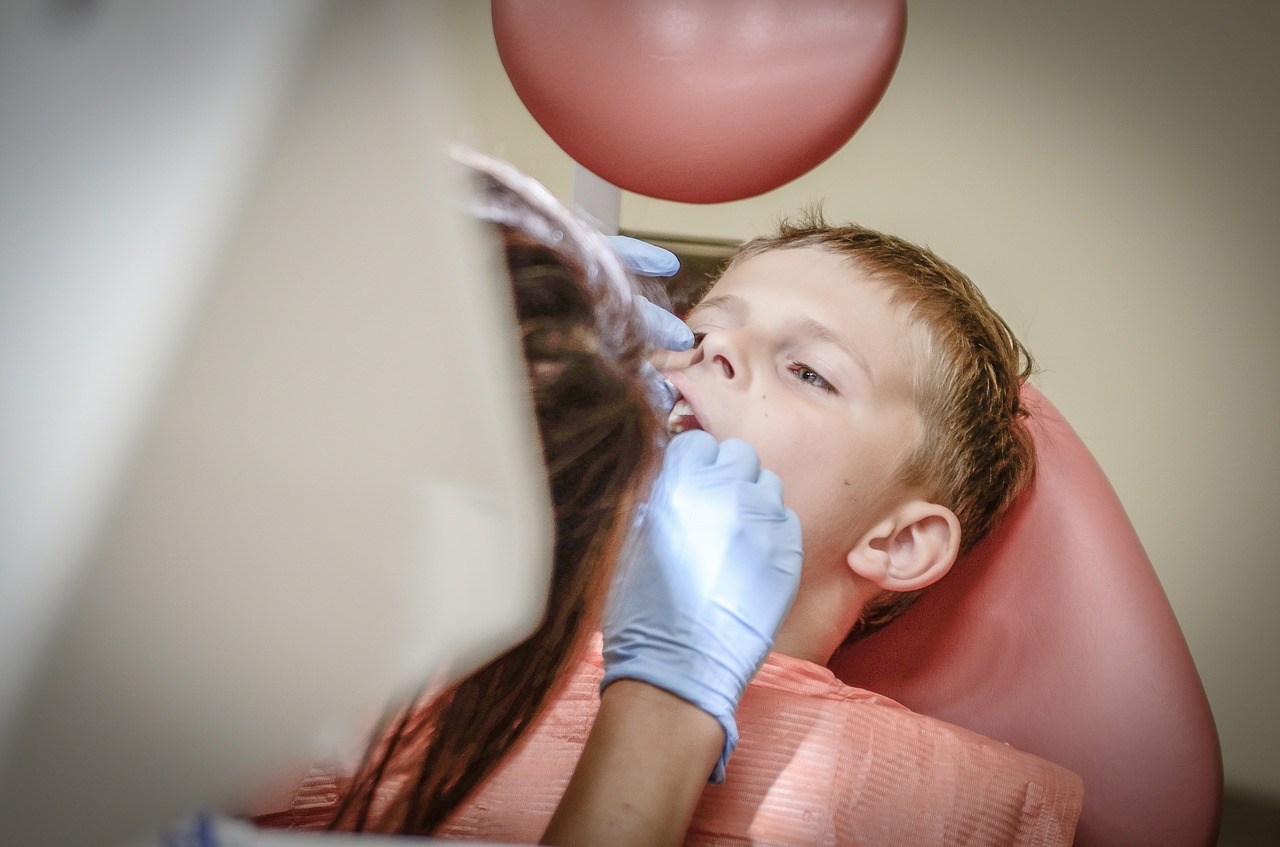Health
Dr. Steven Paul, DDS Oral Surgeon Murrieta

Four Types of Oral Surgery Anesthesia For Dental Patients
It’s not uncommon for a dental patient to feel anxious thinking about an upcoming dental procedure. At our clinic, we are always responsive to easing your nervousness or anxiety about dental treatment. We talk to you, understand your dental and personal profile and then suggest the right kind of oral surgery anesthesia to address the expected pain—nothing more, or less.
Giving anesthesia is about controlling the temporary loss of awareness or sensation. It provides relief from pain and brings down levels of anxiety during a dental procedure. The patient becomes numb to pain and stays relaxed while the dentist carries out the treatment in your mouth.
The type of dental treatment determines the degree of numbness to be attained. A simple procedure will probably need just the numbing of the area being treated. Sometimes, you may be required to be wholly unaware of events during a procedure, in which case you may need to be sedated.
Four Types of Oral Surgery Anesthesia Used By Dentists
- Using Local Anesthetic
A local anesthetic alone is utilized when managing a simple and minimally invasive dental procedure. The anesthetic numbs only a part of your mouth, and you remain awake for the duration of the procedure.
Your dentist may use Lidocaine, which is a common local anesthetic medicine. It is injected in and surrounding the surgery area.
Explain How Local Anesthetics Work?
The first step involves the dentist drying the area with air or cotton or both. Usually, a gel is utilized to numb the skin. Your dentist will then gradually inject the local anesthetic. While most patients don’t feel pain due to the inserting needle, some may feel a bit of a sting.
The effect of an injection of local anesthesia can last up to a few hours. Following the procedure, the patient may find it challenging to eat, drink, or even speak clearly. It is normal to be awkward while using a straw while drinking, and you may need some towels after the procedure.
You will be cautioned not to bite on the numb area as you can hurt yourself without realizing it.
- Nitrous Oxide Sedation With Local Anesthetic
You may be aware of the term “laughing gas” that is used on people during dental procedures. Nitrous oxide, or laughing gas, is an odorless and colorless breathable gas. It acts as a sedative and helps you stay calm. It will relax you by the pleasurable feelings it gives. It functions as an analgesic, and helps relieve pain.
Nitrous oxide is used for simple oral procedures as well as more complex dental procedures. It works quickly, and its effects are reversible. That’s why nitrous oxide is considered to be a safe sedation method.
If you’re about to have a wisdom tooth removed or dental implant insertion, call our office to find out if nitrous oxide sedation is best for you.
Even when nitrous oxide is used, a local anesthetic is still going to be used around the part in the mouth affected by the procedure.
What’s ‘Laughing Gas’ Or Nitrous Oxide And How Does It Work?
You will be given a mix of oxygen and nitrous oxide through a breathing apparatus before and during the procedure, and the gas will enable you to stay conscious and at ease.
The gas has a known side effect: mild amnesia, and till the time its effect goes away, you will not remember much of the procedure.
- Clinic-Based Intravenous Anesthesia Using Local Anesthetic
I.V. or intravenous anesthesia triggers sedation. You will feel calm and relaxed state and not remember the dental procedure that’s usually discomforting.
Some dental patients stay asleep during the entire procedure. Some move in and out of “twilight sleep,” though they remain quite relaxed.
I.V. Anesthesia Eliminates Pain
A dental patient who is significantly anxious about dental procedures may request I.V. anesthesia even for a simple procedure.
Most patients choose I.V. anesthesia for wisdom teeth extraction or dental implants.
Skill Criteria For Dentist To Administer Anesthesia
Oral surgeons must fulfill conditions to offer general anesthesia during in-office dental procedures:
- A minimum of 3 months of hospital-based anesthesia training
- Passed in-office assessment carried out by state dental board examiner
- Performed oral surgery utilizing general anesthesia under examiner’s oversight
- Houses tested monitoring and emergency equipment
- Experienced anesthesia-related emergencies
A state dental board will provide the oral surgeon a license to administer general anesthesia only after successful training and evaluation.
How Does A Dentist Use Intravenous Anesthesia?
A small intravenous needle is inserted into your arm vein. The dentist or staff places an I.V. tube that will drip the anesthetic through the needle and into your vein, and you will soon relax.
Call our office if you have questions about intravenous anesthesia. We will be happy to assist you with your concerns or questions.
- General Anesthesia In Hospital
A hospital offers inpatient general anesthesia to patients who require extensive surgery such as TMJ surgery, and face and jaw reconstruction. An anesthesiologist administers the general anesthesia.
You are encouraged to speak with our dentist or dental office to clarify your doubt about general anesthesia.
Know Dr. Steven Paul, MD, DDS
It is Dr. Steven Paul’s top priority to keep you safe and comfortable, and oral surgery anesthesia helps our clinic to achieve relaxation during procedures.
Once you schedule a consultation for any dental procedure, Dr. Paul and his staff interact with you comprehensively about the most appropriate type of anesthesia. Dr. Paul takes extra care in addressing any concerns you may have and will not move forward until you are satisfied with the answers.
A member of the American Association of Oral & Maxillofacial Surgeons, Dr. Paul has more than 20 years of experience in all areas of oral surgery. He specializes in the treatment and restoration of missing teeth via dental implant procedures including full mouth rehabilitation (All-on-4), restoring both aesthetics and function, bone and soft tissue grafting, associated tumors and cysts in the oral cavity, and wisdom teeth removal.
Every anesthetic technique is customized for the individual patient at our dental clinic.
Health
Addressing Common Myths About Vitamins and Supplements by Amanda Tirado

The wellness industry is filled with advice about vitamins and supplements, but not all of it is accurate. Many people rely on supplements for better health, but misunderstandings about how they work can lead to wasted money or even potential harm. Amanda Lorena Tirado, founder of Xmy, is passionate about educating people on making smarter supplement choices. Her company focuses on high-quality, effective products while also giving back to the community through charitable initiatives. Let’s break down some of the most common myths about vitamins and supplements so you can make informed decisions.
One of the biggest myths is that all supplements work the same way, regardless of how they are taken. Many don’t realize that traditional pills and capsules have to pass through the digestive system, where stomach acid and enzymes break them down. This can significantly reduce the amount of nutrients your body actually absorbs.
In contrast, oral strips and liquid supplements enter the bloodstream more quickly, making them more effective. For example, vitamin B12 is often poorly absorbed in pill form but is much more bioavailable in liquid or sublingual forms. Choosing the right delivery method is just as important as picking the right supplement.
Another misconception is that supplements can replace a healthy diet. Many people assume taking a daily multivitamin covers all their nutritional needs, but that’s not how the body works. Supplements are designed to support a good diet, not replace it. Whole foods provide more than just vitamins, they contain fiber, antioxidants, and other compounds that work together to benefit your health.
For example, an orange does not just offer vitamin C. It also provides fiber, flavonoids, and other nutrients that enhance absorption and support overall health. Research has shown that people who get their nutrients from food rather than supplements tend to have better long-term health outcomes. So while supplements can help fill gaps in your diet, they should not be your primary source of nutrients.
Many people also assume that if a supplement is labeled as “natural,” it must be better and safer. But that’s not necessarily true. The term “natural” is often used as a marketing tool rather than an indicator of quality or safety.
Some natural ingredients can be harmful, especially in high doses or when mixed with certain medications. On the flip side, some synthetic nutrients are actually more stable and easier for the body to absorb. The key is to choose well-researched, high-quality supplements from reputable brands rather than relying on misleading labels.
Another dangerous myth is that taking more vitamins means better health. Some believe that if a little is good, a lot must be even better, but that’s not always the case.
Certain vitamins, especially fat-soluble ones like A, D, E, and K, can build up in the body and become toxic if taken in excessive amounts. Too much vitamin A, for example, can lead to liver damage, while excessive vitamin D can cause kidney problems. Even water-soluble vitamins like B-complex and C can cause side effects in very high doses, such as nerve issues or stomach discomfort. Moderation is key when it comes to supplementation.
At Xmy, the focus is not just on convenience, it’s about real impact. The company is committed to producing supplements that prioritize effectiveness and bioavailability. But their mission goes beyond selling products.
Misinformation about supplements is everywhere, but being informed is the best way to make smarter health choices. The way a supplement is absorbed matters as much as what’s in it. A balanced diet is still the foundation of good health, and more vitamins don’t always mean better results.
Xmy is changing the way people think about supplements. Amanda and her team believe that good health is not just about what you take, it’s about making informed choices and supporting brands that genuinely care. Choosing the right supplements means choosing a brand that stands for something bigger. With Xmy, you are not just improving your health, you are supporting a company that is making a real difference.
-

 Tech5 years ago
Tech5 years agoEffuel Reviews (2021) – Effuel ECO OBD2 Saves Fuel, and Reduce Gas Cost? Effuel Customer Reviews
-

 Tech6 years ago
Tech6 years agoBosch Power Tools India Launches ‘Cordless Matlab Bosch’ Campaign to Demonstrate the Power of Cordless
-

 Lifestyle6 years ago
Lifestyle6 years agoCatholic Cases App brings Church’s Moral Teachings to Androids and iPhones
-

 Lifestyle5 years ago
Lifestyle5 years agoEast Side Hype x Billionaire Boys Club. Hottest New Streetwear Releases in Utah.
-

 Tech7 years ago
Tech7 years agoCloud Buyers & Investors to Profit in the Future
-

 Lifestyle5 years ago
Lifestyle5 years agoThe Midas of Cosmetic Dermatology: Dr. Simon Ourian
-

 Health7 years ago
Health7 years agoCBDistillery Review: Is it a scam?
-

 Entertainment6 years ago
Entertainment6 years agoAvengers Endgame now Available on 123Movies for Download & Streaming for Free
